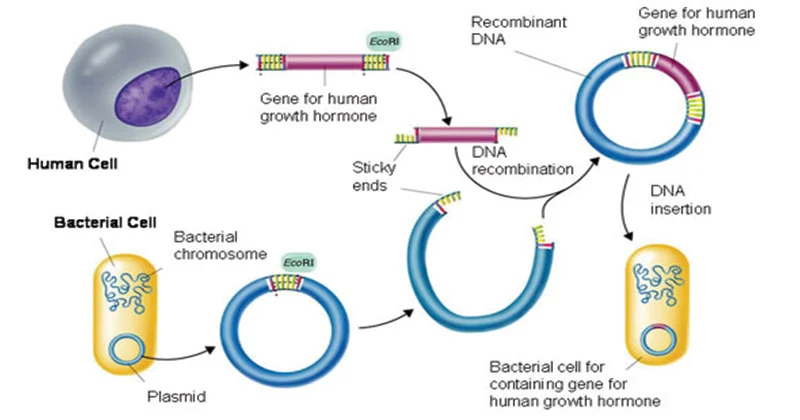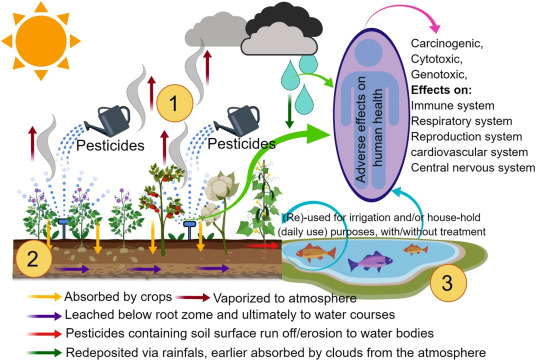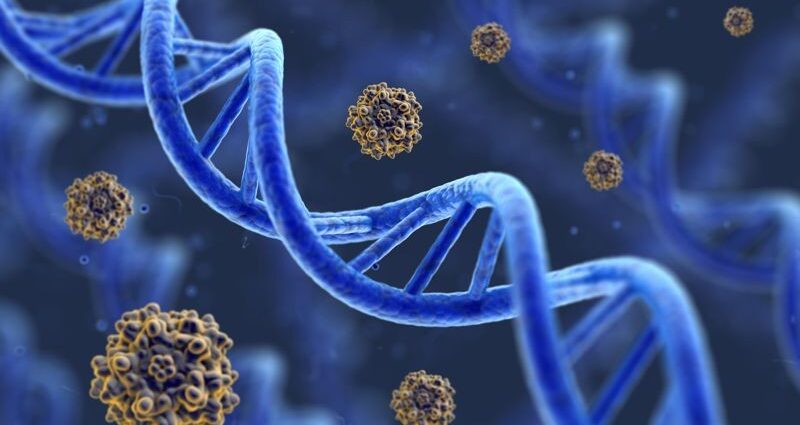
ABSTRACT:
In this article, we will discuss about the recombinant DNA technology, that revolutionized the field of biotechnology. It is a method in which two different segments of DNA combine to form complimentary DNA. We will also discuss the principles, applications and mechanism of this fascinating technology. This technique revolutionized the biological fields such as pharmaceutical, forensics, etc. We will also provide references to understand the concept deeply.
INTRODUCTION:
Advancements in biotechnology have revolutionized various fields, including medicine, agriculture, and environmental science. One of the key technologies driving these advancements is recombinant DNA technology. This powerful tool allows scientists to manipulate and combine DNA from different sources, leading to the creation of genetically modified organisms (GMOs) and the production of valuable proteins. In this article, we will explore the principles behind this technology, its applications, and its impact on various industries.
PRINCIPLES OF RECOMBINANT DNA TECHNOLOGY:
Recombinant DNA technology involves the manipulation of DNA molecules to create new combinations of genetic material. This achieved by cutting DNA at specific sites using restriction enzymes, which act as molecular scissors. These enzymes recognize specific DNA sequences and cleave the DNA at those sites. The resulting DNA fragments can then join together using DNA ligase, an enzyme that seals the fragments by forming phosphodiester bonds.
MECHANISM OF RECOMBINANT DNA TECHNOLOGY:
To create recombinant DNA, a desired gene or DNA fragment inserted into a vector, which is typically a plasmid or a viral genome. Vectors are capable of self-replication and can easily transfer into host organisms, such as bacteria or yeast. Once inside the host, the recombinant DNA replicated along with the host’s DNA, allowing for the production of large quantities of the desired gene or protein.

APPLICATIONS OF R(DNA)T:
1. MEDICINE:
Recombinant DNA technology has revolutionized the production of therapeutic proteins, such as insulin, growth hormones, and clotting factors. These proteins are produced by genetically modified bacteria or yeast, which act as protein factories. This technology has also enabled the development of gene therapy, where defective genes are replaced or modified to treat genetic disorders.

2. AGRICULTURE:
Genetically modified crops have been developed using this revolutionary technology to enhance their nutritional value, increase resistance to pests and diseases, and improve crop yield. For example, genetically modified corn and soybeans have been engineered to produce their own insecticides, reducing the need for chemical pesticides.
3. ENVIRONMENTAL SCIENCE:
This fascinating technology plays a crucial role in environmental remediation. Genetically modified microorganisms are used to degrade pollutants, such as oil spills and toxic chemicals, in a process called bioremediation. These modified organisms have the ability to break down harmful substances into harmless byproducts, aiding in the cleanup of contaminated sites.

IMPACT AND CONTROVERSIES IN RECOMBINANT DNA TECHNOLOGY:
Recombinant DNA technology has had a profound impact on various industries, improving human health, increasing agricultural productivity, and aiding in environmental conservation. However, it has also sparked ethical and safety concerns. Critics argue that genetically modified organisms may have unintended consequences on ecosystems and human health. Therefore, strict regulations and safety measures are in place to ensure the responsible use of this technology.
CONCLUSION:
Recombinant DNA technology has revolutionized biotechnology, enabling scientists to manipulate and combine DNA from different sources. Its applications in medicine, agriculture, and environmental science have transformed various industries. While controversies and concerns exist, the benefits of this technology cannot be ignored. As research and understanding continue to advance, this technology will undoubtedly play a crucial role in shaping the future of biotechnology.
REFERENCES:
Berg, J. M., Tymoczko, J. L., & Gatto, G. J. (2015). Stryer’s biochemistry. W.H. Freeman and Company. https://biokamikazi.files.wordpress.com/2013/10/biochemistry-stryer-5th-ed.pdf
Watson, J. D., Baker, T. A., Bell, S. P., Gann, A., Levine, M., & Losick, R. (2013). Molecular biology of the gene. Pearson Education. https://www.pearson.com/store/p/molecular-biology-of-the-gene/P200000006938
National Human Genome Research Institute. (n.d.). Recombinant DNA. https://www.genome.gov/genetics-glossary/Recombinant-DNA



Your intriguing post on the WordPress feed caught my attention, and I couldn’t help but stop by to say hello!
Spin2: I’m already looking forward to diving into more of your fantastic posts!
Despite my search for the follow button proving fruitless, I’ve taken the initiative to bookmark your blog for future enjoyment!
Consider me a dedicated reader, eagerly awaiting your next compelling piece of content!
Thanks – TheDogGod pomeranianpuppies.uk Thanks – Pomeranian Puppies & Adult Dog Guides & Tips http://pomeranianpuppies.uk